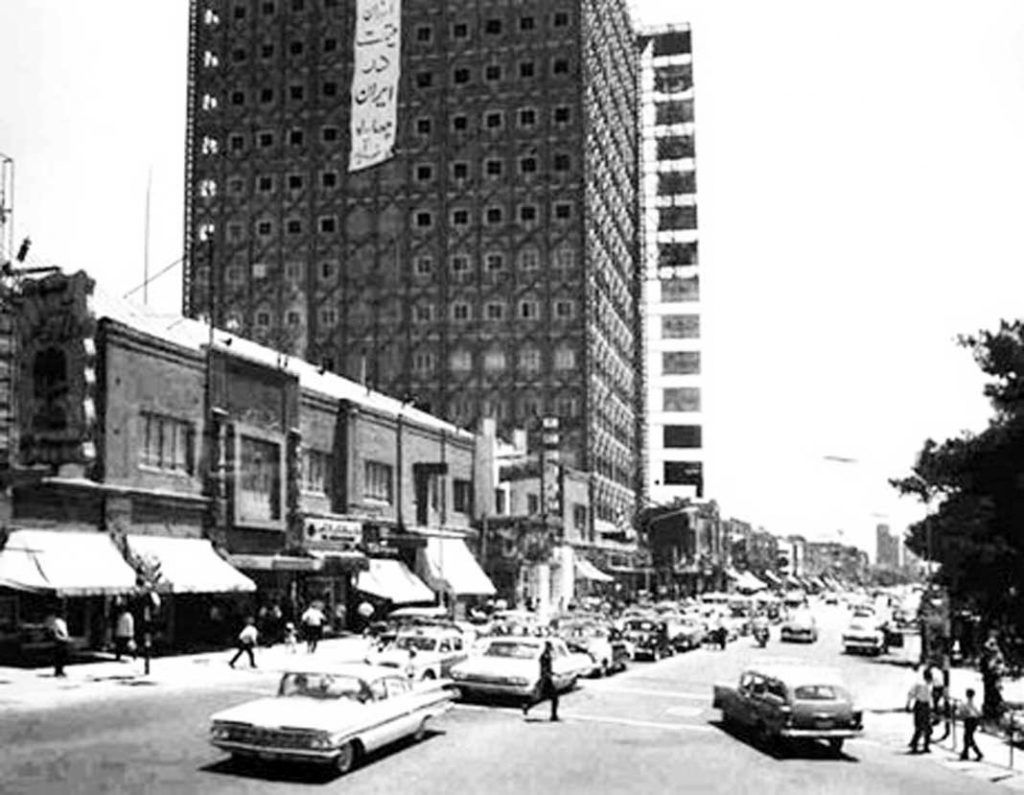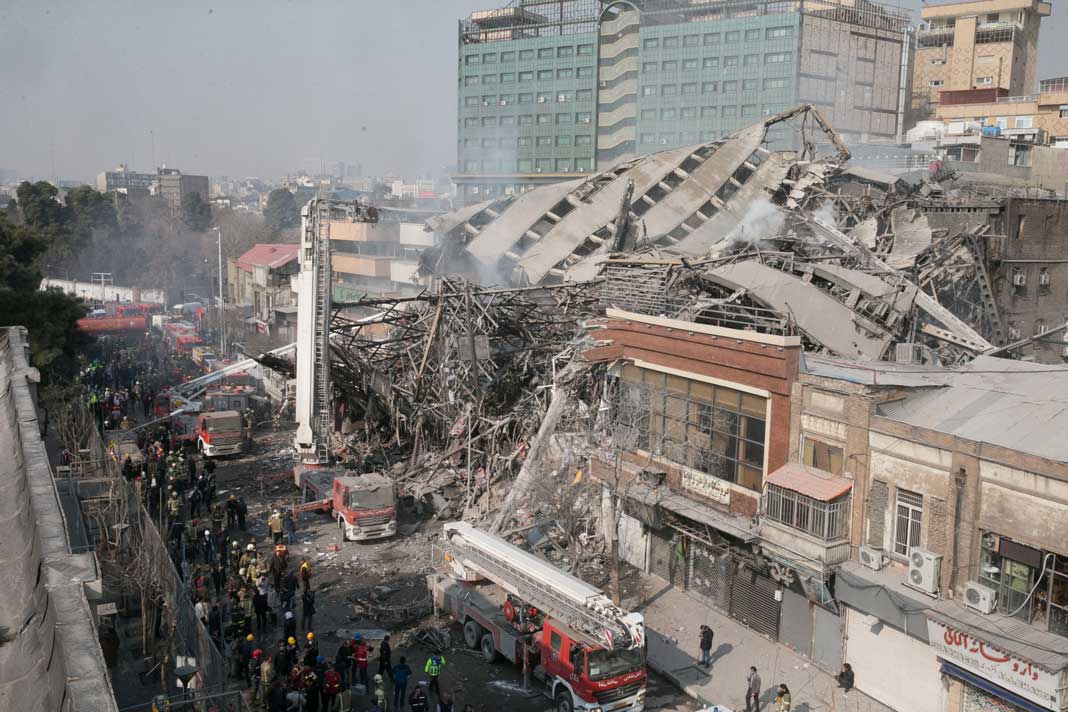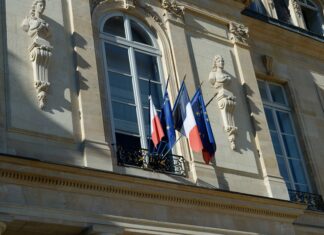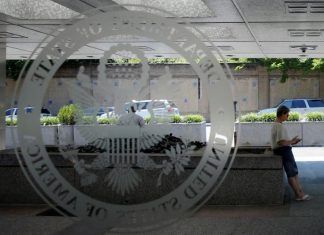By Kamyar Behrang
January 30, 2017: The iconic Plasco shopping complex was destroyed in a deadly fire on January 19, 2017. For many Iranians, the building stood as a nostalgic reminder of a bygone era of prosperity. Critics of the government believe that the tragedy could have been avoided, blaming the regime for mismanagement, not only in Tehran, but also in other major cities in the country.

The Islamic authorities have yet to release an official account of the number of casualties and financial losses caused by the collapse. Meanwhile, there is no shortage of blame and finger pointing going around. No one has taken responsibility for the incident, including the Mayor’s office and the Foundation of the Oppressed and Disabled (MFJ) that owned the building.
During a meeting of the City Council in 2015, Mohammad Baqer Qalibaf, mayor of Tehran, had recommended that Plasco should either be upgraded to comply with the city’s building codes or be completely shut down. Clearly, city authorities and Plasco’s management were aware of the poor state of the building, but took no action to fix the problem. Those officials should be held accountable for the tragic deaths of firefighters who perished when the building collapsed.

The Plasco tragedy exposes the endemic apathy evident among city and government officials. Tehran’s fire department has been severely underfunded for many years. According to a city official, the emergency response department had received only one fifth of its $35.5m budget earmarked for upgrade of facilities this fiscal year. The budget for improving Tehran’s fire services was initially set at $260m, but it was cut by nearly a half in the City Council’s five-year plan. According to the head of Tehran’s fire services, the council had approved a proposal to create an air rescue and firefighting unit, but due to lack of funds the project was shelved.
In belated and conspicuously reticent remarks, Iran’s supreme leader, Ayatollah Ali Khamenei, said that all efforts must focus on the victims of the tragedy, and the investigation into the cause of the fire and the building’s collapse must be conducted at a later date. This contradicts the usual protocol that calls for an immediate investigation to determine the cause of a fire concurrent with search and rescue/recovery efforts. Khamenei’s remarks were a deliberate attempt, as well as a pre-emptive move, to exclude from the investigation Tehran’s mayor, Qalibaf, MFJ (Foundation of the Oppressed and Disabled), and any other individuals or institutions that in one way or another could link the Supreme Leader to the fiasco.
It will be some time before the debris from the collapsed Plasco building is cleared and removed. Meanwhile, there is an ongoing search and recovery operation for the remains of firemen who died when the building collapsed. A number of other victims are still listed as missing, including Afghan nationals, night watchmen, and janitors who worked at the shopping centre.
Officials of Tehran’s Jihadi Management (responsible for safeguarding Velayat-e Faqih’s values) have exploited the fire services for their own public relation gains. They have plastered city walls with massive murals, glorifying the fire services, while neglecting the department and cutting its budget.
Masoud Esmail’lu, an Iranian architect and faculty member at Venice University, says that “Tehran has suffered a wound that may never heal.” He notes that “An iconic landmark such as Plasco shopping centre was an integral part of the city’s identity and its destruction cuts deeply into the hearts of inhabitants. There will always be a scar where the building once stood.”
Although there is no doubt that the collapse of Plasco building was due to poor management and gross negligence of government authorities, it would be foolhardy to expect any official to take responsibility for a disaster that could and should have been averted.







